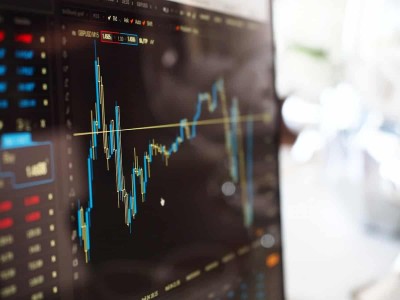Probability is a concept that helps us to figure out the chance that an event (or sequence of events) will happen. Probability can give us an idea of what to expect, which gives it many applications in real life.
So, what are some uses of probability? Some uses of probability include: commute times, engineering, lending & debt, medicine, insurance & risk management, sales, stock market investing, traffic accidents, weather prediction, and website conversions.
Of course, probability is just one tool that can help us to make decisions in business and in everyday life.
In this article, we’ll take a look at 10 uses of probability, along with some calculations to show how to apply this concept.
Let’s get started.
10 Uses Of Probability
Probability is used often in many different scenarios, including:
- Commute Times
- Engineering
- Lending & Debt
- Medicine
- Insurance & Risk Management
- Sales
- Stock Market Investing
- Traffic Accidents
- Weather Prediction
- Website Conversions
Let’s take a closer look at each one of these, starting with commute times.
Commute Times
At first, it might not seem that probability has much, if anything, to do with commute times. However, if you look closely, you can find a way to use probability to ensure that you are (almost) never late.

Example: Using Probability For Commute Times (Minimize Lateness)
You want to show up on time for work, but you don’t want to show up too early (after all, who wants to sit in the parking lot for an hour?)
So, for 20 work days, you record how many minutes your morning commute takes. You get the following commute times:
{19, 25, 24, 26, 18, 23, 22, 22, 24, 19, 20, 25, 24, 18, 22, 18, 19, 24, 25, 21}
On the best days, you can get to work in as little as 18 minutes, but you cannot count on that. However, on almost every day, you can get to work in 25 minutes or less.
In fact, there is only one day out of the past 20 days that it took you longer than 25 minutes to get to work (26 minutes on the fourth day).
So, if you leave yourself 25 minutes for the commute, you expect to get to work early or on time on 19 out of 20 days. This is a 95% probability (19 / 20 = 0.95 or 95%).
Even on the days when the commute takes a little longer, you should only be a minute or two late on 1 day out of 20.
By leaving 25 minutes for your commute, you know that you will be waiting at most 7 minutes in the parking lot (25 – 18 = 7, where 18 was your fastest commute time). That is only enough time to listen to a couple of songs on the radio or read a quick article online.
Engineering
An engineer wants to make sure that things work. Of course, there are no guarantees, but you can still use probability to create an acceptable chance that things will work as expected.

Example: Probability In Engineering
For example, let’s say that a device use a specific part 10 times in different places. The probability of a given part failing before 5 years is 0.1% (so a 99.9% chance they will work for 5 years or more).
Assuming the parts fail independently, we can calculate the probability that all 10 parts in the device will work for at least 5 years:
- P(all 10 parts work for at least 5 years) = 0.99910
This comes out to 0.990045, which means that there is a 99.0045% chance that all 10 parts in the device will still be working after 5 years. So, there is less than a 1% chance of failure within the first 5 years.
Lending & Debt
Banks that make loans to people for homes or businesses want to know that they will be paid back most of the time. They might not want to make risky loans that have a high probability of default.

Example: Probability In Banking
Let’s say that a bank wants to figure out the probability that a borrower who holds an MBA degree will default on a business loan.
That is, the bank wants to calculate the conditional probability P(A|B), where:
- A = the borrower defaults on the business loan
- B = the borrower holds an MBA degree
The formula for conditional probability is
- P(A|B) = P(AnB)/P(B)
where P(AnB) is the probability that both events A and B happen (an MBA holder who defaults on a business loan).
Based on past experience and all of their business borrower profiles, the bank has calculated the following probabilities:
- P(AnB) = 0.1
- P(B) = 0.25
So, we can calculate:
- P(A|B) = P(AnB)/P(B)
- P(A|B) = 0.1/0.25
- P(A|B) = 0.4
So, there is a 40% chance that an MBA holder will default on a business loan. The chance might be higher for someone without an MBA, so the MBA holder might be a less risky borrower.
Medicine
Probability can also help doctors and patients to make important decisions about treatment. For example, if a patient has a condition that can be treated with surgery, he can compare probabilities to decide whether to go forward with the surgery.

If the probability of death from the untreated condition is 5% and the probability of death during surgery is 1%, then the patient is taking a smaller risk by getting the surgery than by going untreated.
Insurance & Risk Management
An insurance company can use probability to quantify risks. For example, they might want to compare the level of risk for an area that is prone to storms and flooding.

Example: Probability In Insurance & Risk Management
Let’s say that in a given year, there is a 20% chance that a region will have a storm that is severe enough to cause flooding. If such a storm occurs, there is a 40% chance that flooding will actually occur.
The insurance company can calculate probabilities as follows:
- Probability of a severe storm and a flood (heavy damage): 0.2*0.4 = 0.08 (8%)
- Probability of a severe storm but no flood (moderate damage): 0.2*0.6 = 0.12 (12%)
- Probability of no severe storm and thus no flood (light damage): 0.8 (80%)
Based on these probabilities and estimated damages in each case, the insurance company can charge a reasonable premium for customers in that region.
Sales
A salesman can also use probability to figure out how long it might take to make a sale.

Example: Probability In Sales
Let’s say that a salesman has a 4% chance of making a sale on a given sales call. He wants to figure out how long it will take to make 6 sales. (Assume the salesman can make 30 calls per day).
First, we set up the equation:
- (Number Of Sales Made) = (Probability Of Sale)*(Number Of Sales Calls)
Using the 4% close rate (0.04 as a decimal) and 5 desired sales, we get:
- 6 = 0.04*Number Of Sales Calls
- 6 / 0.04 = Number Of Sales Calls
- 150 = Number Of Sales Calls
So, the salesman needs to make 150 calls to make 5 sales. Since the salesman can make 30 calls per day, it will take 150 / 30 = 5 days to make the 6 sales.
Stock Market Investing
We can also use probability in stock market investing to decide whether to buy, hold, or sell shares of a particular company.

Example: Probability In Stock Market Investing
Let’s say that a company is trying to develop a new product for a given market (they will either succeed with the technology or fail – assume there is no partial success). Their target market may grow, stagnate, or fail in the next year.
You think the following probabilities apply:
- Probability of successful product development: 80%
- Probability that the target market grows: 60%
- Probability that the target market stagnates: 30%
- Probability that the target market declines: 10%
If we assume that the chance of successful product development is independent of market conditions, then we can find the following probabilities:
| Product | Market Grows (60%) | Market Stagnant (30%) | Market Declines (10%) |
|---|---|---|---|
| Success (80%) | 0.8*0.6 =0.48 (48%) | 0.8*0.3 =0.24 (24%) | 0.8*0.1 =0.08 (8%) |
| Failure (20%) | 0.2*0.6 =0.12 (12%) | 0.2*0.3 =0.06 (6%) | 0.2*0.1 =0.02 (2%) |
based on product success or failure and market conditions.
Traffic Accidents
Probability can help us to figure out the chance of a fatal accident on a given stretch of road.

Example: Probability In Traffic Accidents
Let’s say that there is a 2% probability of an accident on a given day on a stretch of road. This means that we expect an accident every 50 days on this stretch of road.
Of the accidents that have occurred on that stretch of road, 4% have been fatal. This means that we expect 1 out of 25 accidents on this road to be fatal.
So, there is a 0.02*0.04 = 0.0008 (0.08%) chance of a fatal accident on this road on a given day.
This means that we would expect a fatal accident on this road once every 1250 days (3.42 years). (Note that 1250 is the reciprocal of 0.0008).
Weather Prediction
Probability is used in weather predictions to get a handle on the chance of precipitation. For example, there might be a 50% chance of precipitation on a given day, with the chance highest early in the day.

Website Conversions
Probability can also help you to figure out how many conversions (sales, email signups, etc.) to expect from your site visitors.

Example: Probability In Website Conversions
Let’s say that 12% of the people who visit the homepage on your website will click on a link to visit the sales page for your book.
Also assume that 5% of the people who visit the sales page on your website will buy the book.
Then we can calculate the probability that a website visitor will buy your book as 0.12*0.05 = 0.006 (0.6%).
So, out of every 1000 website visitors, 6 of them will buy your book.
If you have 25,000 website visitors per month, then you would expect to sell:
- (Website Visitors)*(Conversion Rate)
- =(25,000)*(0.006) = 150 books
If each copy of your book sells for $25, then your total revenue for a month would be:
- (Number Of Books Sold)*(Book Price)
- =(150 books)*($25 per book)
- =$3750 per month
Conclusion
Now you know a little more about probability and how you might be able to use it to help you make decisions in business or in life.
You can check out my article on how statistics is used here.
You might also want to check out my article on the difference between probability & statistics.
You can learn how to use a Venn diagram to map out probabilities here.
I hope you found this article helpful. If so, please share it with someone who can use the information.
Don’t forget to subscribe to my YouTube channel & get updates on new math videos!
~Jonathon

